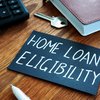What is mortgage insurance?

An insured mortgage is any mortgage that is covered by mortgage default insurance. Mortgage default insurance (also known as “mortgage insurance”) facilitates a down payment on the part of the borrower, but is ultimately designed to protect the lender in case of borrower default and foreclosure on the property. This is not to be confused with mortgage protection insurance, which provides protection to the borrower by taking care of their mortgage payments in the event that they or their co-applicant dies or get critically ill. In Canada, there are 3 mortgage default insurance providers: the Canada Mortgage and Housing Corporation (CMHC), Genworth Financial, and Canada Guaranty.
When is mortgage insurance needed?
At a high level, mortgages can be classified into two categories:
- Conventional mortgages: These mortgages have a minimum 20 percent down payment
- High ratio mortgages: Mortgages with a down payment under 20 percent
Mortgage insurance is a mandatory requirement in Canada for high-ratio mortgages, where the borrower has under 20% for a down payment. The amount typically ranges between 2.8% to 4.0% of the borrower’s mortgage amount and provides an added degree of protection to the lender. Without this protection, the lender faces a greater risk of loss if the borrower defaults. Hence, with this added protection, the lender is comfortable with lending to the borrower at the similar lower interest rates that they would charge to a borrower who obtained a conventional mortgage. Certain lenders offer even lower rates on insured mortgages because their investment is more secure due to the coverage provided by the insurer.
Eligibility
To qualify for mortgage default insurance, there are certain criteria that the borrower has to meet.
- Maximum amortization period allowed on insured mortgages is 25 years
- If the purchase price exceeds $500,000 (and is below $1 million), a higher down payment is required. The minimum downpayment in this case changes to 5% on the first $500,000 and 10% on the remaining amount. For clarity, on a $600,000 house, the downpayment would be (5% of $500,000) + (10% of $100,000) = $35,000
- If the value of the home exceeds $1 million, then a 20% down payment has to be put down towards the purchase with no exceptions.
- Maximum GDSR / TDSR Ratios of 35/42 with CMHC and 39/44 with Sagen and Canada Guaranty (but this might change down the road)
How much is mortgage insurance?
Mortgage insurance costs are determined by the insurance premium rate that the borrower has to pay. The chart below illustrates the premium rate that has to be applied based on the value of the home and the down payment being put down.
| Loan-to-Value Ratio | Premium on Loan |
|---|---|
| Up to and including 65% | 0.60% |
| Up to and including 75% | 1.70% |
| Up to and including 80% | 2.40% |
| Up to and including 85% | 2.80% |
| Up to and including 90% | 3.10% |
| Up to and including 95% | 4.00% |
The Loan-to-Value (LTV) ratio is calculated as the amount of the mortgage being obtained divided by the purchase price of the home. For example, on a $500,000 home, if the borrower obtains a mortgage for $450,000, the LTV ratio is ($450,000/$500,000) x 100% = 90% LTV. In this scenario, the borrower would then have to pay a 1.70% premium on the loan amount portion for mortgage insurance. It is important to note that insurance premiums are calculated based on the actual mortgage amount required and not on the value of the total purchase price of home.
Note that in the above table, insured conventional mortgages have to pay between 0.60% to 2.40% in mortgage insurance premium to become insured mortgages while high-ratio mortgages have to pay between 2.80% to 4.00% for the same.
How does this get paid?
Mortgage insurance is not a lump sum payment that is due at the closing of a transaction. The amount is actually added to the total mortgage amount and then paid off over the life of the loan along with the regularly scheduled principal and interest payments. For example, if a mortgage of $400,000 is taken out on a property valued at $500,000 and for whatever reason the borrower decides to opt for an insured mortgage, then the adjusted mortgage amount is now ($400,000 + ($400,000 x 2.4%)) = $409,600. This is comprised of the mortgage amount of $400,000 and the mortgage insurance premium of $9,600.
Can my premium be reduced?
Up to a certain Loan-to-Value, mortgage insurance premiums cannot be negotiated for reduction. There is another way to achieve this though. By buying a less expensive home and keeping the equity portion the same, the borrower can reduce the Loan-to-Value. If the borrower reduces the LTV ratio to a point where it falls into a different threshold in the chart above, then the borrower can save on the additional cost of premiums.
Mortgage default insurance vs. mortgage life insurance
Lastly, let’s talk about the key differences between mortgage default insurance and mortgage life insurance. Mortgage life insurance is a policy that can be purchased by a mortgage borrower. At its core, it pays off or pays down the mortgage outstanding on a property if the person who obtained the mortgage passes away. This is designed to protect the person’s loved ones, so they are not responsible for paying down the mortgage in the event of the mortgage owner’s death.
For any questions about what type of option is best for you or to find out more about mortgage default insurance, please contact our team by email at info@clovermortgage.ca or call us at 416-674-6222 to speak with a qualified mortgage broker, who will be glad to assist you!
Additional Resources:





